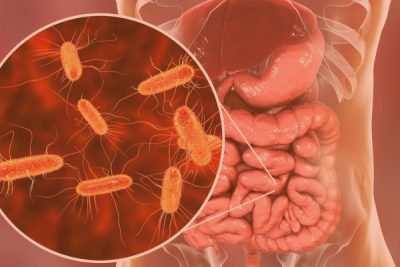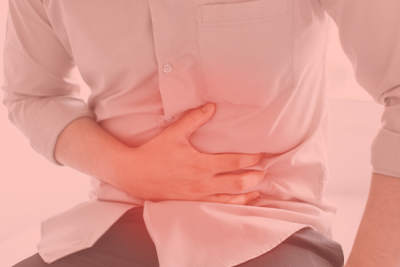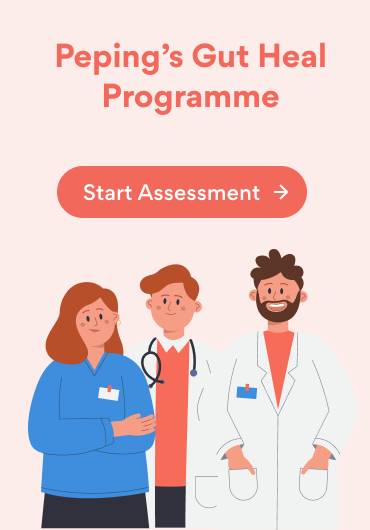Are blood sugar levels related to your gut health?
You are probably aware that diabetes places you at an increased risk for health problems like heart disease and obesity, but you may be surprised to learn that it can also cause problems in your gut and other areas of your gastrointestinal (GI) tract.
Understanding diabetes
The pancreas produces a hormone called insulin, which regulates the metabolism of carbohydrates by signalling cells to remove glucose from the blood and deliver it to body tissues for utilization. Diabetes occurs when the pancreas either does not produce insulin at all (type 1) or produces insulin inadequately and/or responds poorly to insulin (type 2).
Gestational diabetes is another type that may develop during pregnancy. While type 1 diabetes is autoimmune and common in children, type 2 diabetes occurs frequently among middle-aged adults and results from either inadequate insulin production or insulin resistance, which means that the body produces insulin but cannot use it effectively. Type 2 diabetes is associated with high-stress levels, sedentary lifestyles, and other factors.
The most common symptoms of diabetes include excessive thirst, frequent urination, increased appetite, exhaustion or fatigue, dry skin, and changes in vision (such as blurred vision). Blood tests to assess blood sugar control include fasting blood sugar, post-prandial blood sugar (two hours after a meal), and a three-month average of blood sugar readings (glycated hemoglobin or HbA1c).
The link between diabetes and the gut
Recent studies have reported that diabetes is directly related to the health of your intestines (or gut health). The intestines contain several microorganisms, including bacteria, viruses, and fungi, collectively referred to as the gut microbiome.
Microorganisms protect our bodies, produce several nutrients and metabolites, and remove harmful wastes from the body. However, every coin has two sides, the gut contains beneficial as well as harmful bacteria, an imbalance of which, known as microbial dysbiosis, can result in disease. One type of bacteria may contribute to type 2 diabetes, whereas another may protect from disease.
The onset of type 2 diabetes is often due to increased intake of high-calorie food items. While eating foods with high fibre content and consuming probiotics can maintain the beneficial bacteria in your gut in good shape, consuming carbohydrate-rich and fat-rich diets has the opposite effects, i.e., it increases the number of harmful bacteria in the gut that release various types of toxins in the body.
The toxins increase the levels of low-density lipoprotein (LDL or bad cholesterol), and triglycerides (TGs) and decrease high-density lipoprotein (HDL or good cholesterol) levels in the blood. The changes can result in obesity, increased insulin resistance, and thus, increase the risk of diabetes.
Western diets, high in refined sugars and saturated fats, increase the risk of developing type 2 diabetes. In a study, mice fed a Western diet developed insulin resistance and glucose intolerance, which are contributing factors to type 2 diabetes. They also noted a significant change in the composition of the gut microbiome.
Poor gut health and dysbiosis can lower immunity, worsen mental health, and increase changes in mood, depression, and stress levels. Stress is an established risk factor for type 2 diabetes.
A high-fibre diet can not only help manage diabetes but also prevent it since fibre acts as a prebiotic which helps in increasing the number of beneficial bacteria. The good bacteria produce short-chain fatty acids (SCFAs) which act as nutrition for further production of beneficial bacteria.
A recent study, published in the Diabetes Journal, reported that individuals with high levels of the Coprococcus bacterium had greater insulin sensitivity, whereas those with higher levels of the Flavonifractor bacteria had lower insulin sensitivity. Also, individuals who do not process insulin properly have lower levels of bacteria that produce a type of fatty acid known as butyrate (Faecalibacterium prausnitzii and Roseburia intestinalis).
Another study has reported that gut microbial dysbiosis could contribute to type 2 diabetes development, and a recent paper published in Nature Communications indicated that particular bacterial species may be critical by affecting how glucose and lipids are used in the body.
Specific gut microbes such as Akkermansia muciniphila might be decreased in diabetes and when administered to murines exerted antidiabetic effects. Studies conducted in mice reported that bacteria contributing to the harmful effects of Western diets: Lactobacillus johnsonii, Lactobacillus gasseri, Ruminococcus gnavus and Romboutsia ideal. The bacteria also correlated with the body mass index (BMI) of individuals following Western diets.
Gastrointestinal tract (GIT) disorders and diabetes
Gastrointestinal symptoms, such as diarrhea, constipation, bloating, abdominal pain, floating stool, and intestinal gas are more common among diabetes patients. The symptoms are linked to poor glycemic (blood sugar) control and lower quality of life.
- Diabetes and Gastroparesis: Diabetes is the leading cause of gastroparesis, a condition in which food stays within the stomach for a prolonged period (delayed gastric emptying), rather than passing into the small intestine when it should. High blood sugar from diabetes can lead to chemical changes in the vagus nerve, which connects the brain to the gastrointestinal (GI) tract, and impedes the nerve’s ability to regulate gastric emptying. Gastroparesis symptoms include reduced appetite, nausea, vomiting, feeling full after eating less food, stomach bloating or discomfort after meals, stomach pain, heartburn, and abdominal pain. Gastroparesis is more common in women than men and can lead to nutrient deficiencies, fatigue, anemia, and weight loss.
- Diabetic Enteropathy: Enteropathy refers to a disease of the intestines. You are more likely to have it if you have gastroparesis. Long-term diabetes can result in problems with your small intestine, colon, or rectum. It may be difficult to control bowel movements or stool might leak from your rectum, and the problem could worsen after a meal.
- Diabetic Autonomic Neuropathy: Uncontrolled blood sugar can damage your nerves, including the nerves in your stomach and intestines. Diabetes is the most common cause of autonomic neuropathy resulting in peripheral nerve dysfunction. The condition could affect the heart, lungs, gastrointestinal tract, and associated tissues. The gut contains the enteric nervous system, which if affected by neuropathy, can give rise to diarrhea, constipation, difficulty in the passage of food and liquids through the food pipe or esophagus (esophageal dysmotility), and the accidental passing of solid or liquid stools from your anus (fecal incontinence). Diabetic autonomic neuropathy cannot be cured, and blood sugar levels must be under control to prevent the development of neuropathy.
- Celiac Disease and Type 1 Diabetes: People with celiac disease are more likely than those without to develop type 1 diabetes. A study conducted in 2015 reported that type 1 diabetes was prevalent among 0.4% of control individuals and 3.20% of individuals with celiac disease.
- Pancreatitis and Diabetes: In some individuals with pancreatitis (inflammation of the pancreas), the damage due to inflammation can impede the pancreas’ ability to produce insulin and result in diabetes. A study reported that individuals with acute pancreatitis had a greater chance of developing diabetes (23%) than the general public (4% to 9%).
- Non-alcoholic Fatty Liver Disease (NAFLD): NAFLD refers to the accumulation of fat cells in the liver. It is similar to liver damage observed among people with alcoholism. You are at an increased risk of NAFLD if you have obesity or diabetes.
If you have nonalcoholic fatty liver disease, you’ll find it hard to control your diabetes. That’s because the more fat you have in your liver, the harder it is for your body to use and react to insulin.
Symptoms include tiredness and pain in the upper right side of the stomach; however, most affected individuals do not experience any symptoms. Usually, the first indicator is elevated alanine aminotransferase (ALT) levels in the blood, which assess liver function. NAFLD has no specific treatment.
Other GI diseases that are more common in people with diabetes include hepatitis C (infection of the liver), cirrhosis (scarring of the liver) and hemochromatosis (iron buildup that leads to liver damage).
How to improve your gut health when you have diabetes?
The bacteria in your intestines can affect blood sugar levels and general health. Here are a few ways to help you build a healthy gut flourishing with beneficial bacteria:
- Consuming high-fibre plant-based foods such as vegetables and fruits, and whole grains, particularly millets, and adding ingredients such as turmeric, coconut oil, and ghee to your diet could increase the number of good microbes and improve microbial diversity which reduces the inflammation in our body.
- Dietary fibre is vital to good health since it regulates SCFA levels, and not getting enough can lead to constipation or diarrhea. Fibre foods such as beans, oats, cauliflower, yams, and cashews may also help to regulate blood sugar levels by slowing digestion, decreasing the number of harmful bacteria and nurturing the growth of good bacteria.
- Include more probiotics (the live bacteria in foods) in the form of curd, kefir, or buttermilk as they contain different strains of Lactobacillus. Mice fed foods rich in R. ilealis showed lowered glucose tolerance levels and lesser insulin production, indicating a diabetes-like condition. Of interest, while R. ilealis does not affect the amount of body fat, L. johnsonii and L. gasseri can help reduce it as well as improve glucose tolerance.
- Keep the good (unsaturated) fat and protein content moderate in the diet and carbohydrate content low.
- Replacing saturated fat-rich foods (such as lamb, beef, pork, cheese, coconut oil, cream, and butter) with unsaturated fat may protect against harmful endotoxin-producing gut microbes that increase insulin resistance. Sources of unsaturated fat include seeds (such as flaxseeds), nuts, olives, avocados, vegetable oils, and tahini.
- Diabetes patients frequently consume artificially sweetened foods to replace those containing sugar; however, artificial sweeteners such as sugar alcohols (such as sorbitol, erythritol, xylitol, and maltitol), can lead to diarrhea. Avoid consuming products that contain ingredients ending in “itol” in large quantities.
- Get moving. Physical activity of a minimum of 20 minutes daily or three hours weekly can help prevent and manage diabetes. Regular exercise may help to increase the number of favourable gut microbes, improve gut microbial diversity, and reduce the number of toxin-producing bacteria. Exercise could train gut muscles to improve digestion and eliminate harmful bacteria, and reduces inflammation associated with insulin resistance.
- Increase your nut intake. Nuts as they not only provide fibre and unsaturated fats, but also contain potent disease-preventing chemicals called polyphenols, and nourish beneficial bacteria as well as intestinal cells, making them better equipped to fight off disease.
The Bottom Line
The types of microbes in your gut could favourably or unfavourably influence your body weight, immunity, cholesterol and blood sugar levels, and are, therefore, related to diabetes. Particular bacteria in your gut can be used to manage diabetes. At an individual level, improving your diet quality and regular exercise can positively affect the gut microflora, prevent obesity, lower stress levels, and prevent and/or manage diabetes.













